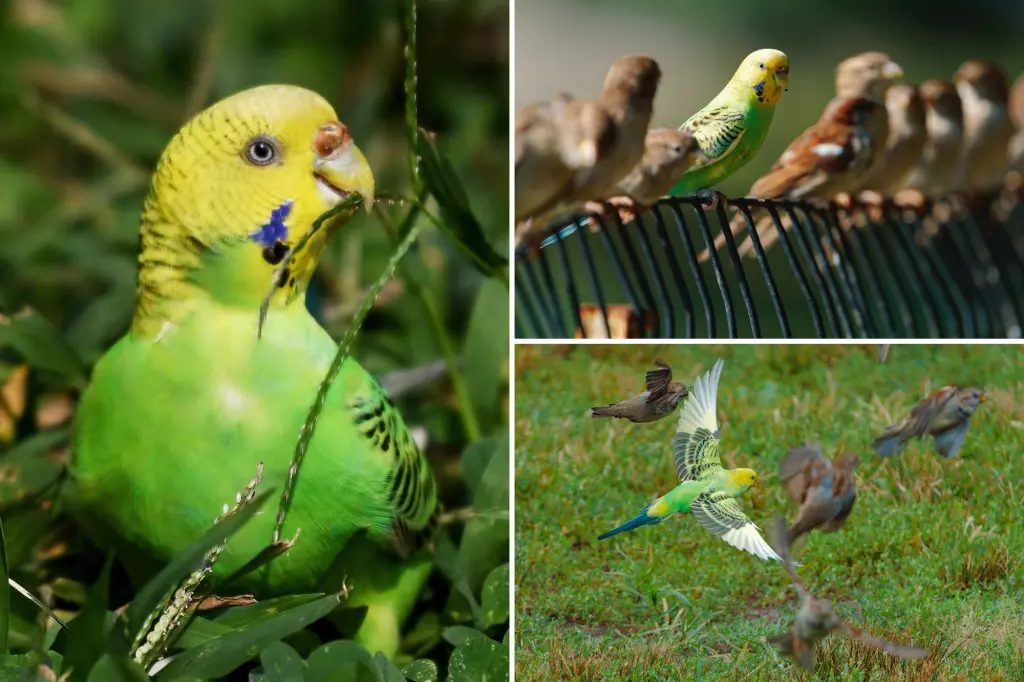
Turns out, this bird you can change.
An escaped parakeet has joined a flock of sparrows and has been living free in the wilds of Central Park for the past month — but the bright green birdie only has a few short weeks before the incoming cold weather threatens her life.
Birders are desperately trying to capture the parakeet for its own safety so it doesn’t have to face New York winter temperatures — but the frisky free bird they’ve adoringly dubbed Mei Mei has completely shed her domesticity and no longer wants anything to do with caged life.
“She’s become a sparrow. Literally … But she doesn’t know what’s coming,” said Sean Mintz of the Upper East Side, who has been chronicling Mei Mei’s sightings on his X account Bagels & Walks.
“The fact that she was taken in gives her a better chance than some, but she’s just not built for this environment, and she just doesn’t know at the moment that in two weeks it might be too cold for her.”
Mei Mei has been hopping around the Seneca Village area of Central Park near the Upper West Side since at least Aug. 20, when birders theorize she first became lost — whether she escaped from a home, split from a breeder or was intentionally released.
The Budgerigar, also known as Budies or common parakeets, spent her first days of freedom alone and spent some time with a flock of cowbirds, but it wasn’t long before a group of House Sparrows claimed her as one of their own.
“She’s become a sparrow. Literally,” said Mintz, an investor who has taken up birding in the last three years.
“If it’s foraging in the grass, it’s very hard to see because it’s green, but if it flies with the brown sparrows, you might notice something is off. When you take a closer look, it’s this phenomenally beautiful, colorful, unusual bird that you’re pretty sure should not be in Central Park.”
Birders can tell that Mei Mei is a female based on the brown color of her cere, or the skin around her nose. Male budgies typically have blue or green coloring.
Budgies, which are native to Australia, are almost exclusively domesticated in New York because they cannot survive Big Apple winters without a proper environment maintained at around 70 degrees.
Unlike their Argentinian-born cousins the monk parakeets that have taken over the Greenwood Cemetery and can be found living wild all over New York City, Budgies are only used to warm weather and do not have enough body fat to survive the Big Apple’s winters.
In her short time out of captivity, Me Mei has apparently embraced her new life as a free bird — lost parakeets are known to perch on human fingers, even those of strangers, but Mei Mei flees with her new flock every time a person approaches.
She’s even attuned her behavior to match those of the House Sparrows, who do not fly south for the winter, said David Barrett, the brains behind the popular X account Manhattan Bird Alert.
“The Budgerigar survives by eating grass seeds and possibly bugs. She stays safe by foraging with a House Sparrow flock: if one bird notices danger and flies away, the entire flock will join in flight. This affords protection from birds of prey like hawks or falcons, which are present in the park,” said Barrett.
“This is great for its short-term survival, but it now behaves like a wild bird, and this makes it quite challenging to rescue by ordinary means.”
Mei Mei’s new life has the birding community split, with some celebrating her newfound freedom as symbolic, while others are frantically trying to put her back in a cage.
The Australian birds do not store fat and cannot survive once temperatures drop below 50 degrees, meaning rescuers have just about four weeks to capture Mei Mei and bring her indoors.
Birders are hoping that the impending cold weather will slow Mei Mei down enough so they can finally catch her.
The next task will be finding and returning her to her owner, or finding her a new place to call home.



